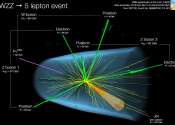Searching for heavy new particles with the ATLAS Experiment
Since discovering the Higgs boson in 2012, the ATLAS Collaboration at CERN has been working to understand its properties. One question in particular stands out: why does the Higgs boson have the mass that it does? Experiments ...









